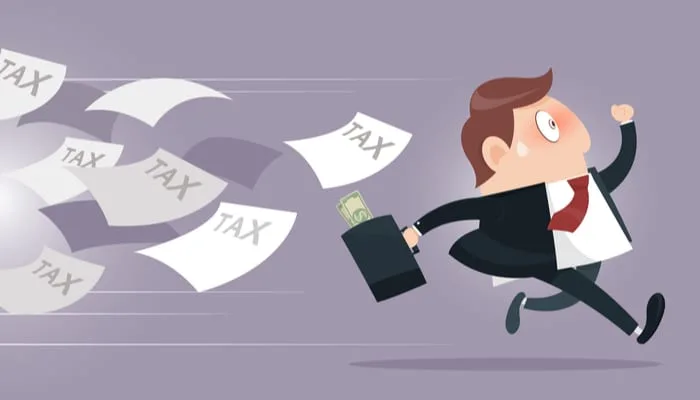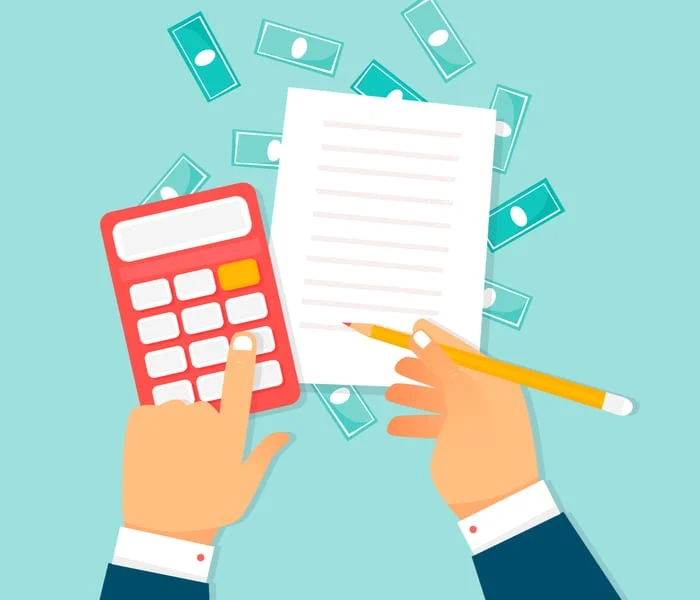Depreciation is when something loses value over time due to a higher probability of breaking as it ages.
This comes in two types, but we’ll focus on the most common one: straight-line depreciation.
What Is Straight Line Depreciation?
Straight-line depreciation helps businesses account for the way some assets lose value over time.
This method makes it easy to get tax deductions, and also helps simplify financial statements.
Accountants have several ways to calculate depreciation. The straight-line depreciation method is the most common. There are several reasons for this, which include:
- Doesn’t require complicated calculations
- Easy to understand
- May be applied to many assets
- Deducing the same amount per year makes it easier to predict financial performance
Limits of Straight Line Depreciation

Jack the Giant Slayer/Shutterstock
There are some assets on which straight-line depreciation can’t be used. Land and residential real estate are two common examples.
Land Values
Physical land isn’t depreciated at all. The Internal Revenue Service explains why in Publication 946. It says, “You cannot depreciate the cost of land because land does not wear out, become obsolete, or get used up.”
Although you cannot depreciate land, you can depreciate some costs for land preparation. For example, landscaping costs needed to prepare land for business use may be subject to straight-line depreciation.
Rental Homes
While land does not depreciate, residential property, such as rental homes, does. But the IRS requires investors to use a different depreciation method known as the modified accelerated cost recovery system (MACRS, for short).
If your rental property was placed into service after 1986, you must use MACRS when calculating depreciation.
Varies by Asset
For most asset types, you can typically choose which depreciation method to use. However, the straight-line method should not be used for certain asset types.
Computers, for instance, quickly lose much of their value as new technology makes them obsolete. You can use straight-line depreciation for computers, but it won’t be as accurate.
This is why most companies expense technology instead of making monthly adjustments.
Depreciation Alternative
In other instances, Section 179 is used in favor of straight line depreciation. This method is named after the section of the tax code that describes it.
Section 179 lets you deduct all the asset’s cost in a single year rather than over several years. It can be used for several kinds of property, but the asset has to be used for an income-producing business.
This depreciation can be used for equipment, vehicles, computers, and office furniture. However, you can’t depreciate more than $1 million in a single year.
Why Depreciation Matters

Monster E/Shutterstock
If you’re wondering why we are even doing an article on straight line depreciation, you’re probably not alone. Depreciation serves a few different functions.
And we think understanding these will help your business run smoothly and even increase profits.
Tax Savings
Although it is an “unseen cost,” depreciation offers significant tax savings. This happens by recording an asset’s loss of value as if it were an expense.
Annual depreciation expense is reported by the IRS using Form 4562. This tax form and its instructions help you choose the right kind of depreciation for an asset.
Financial Statements
Depreciation also helps you produce more accurate financial statements. For instance, say you buy an expensive piece of equipment.
If you were to record the entire asset cost as an expense in a single year, your business might show a loss, even though profits were strong.
Smooth Cash Flow
In addition to tax savings, annual depreciation allows you to spread the cost of expensive purchases over the life of the property. This gives you a better idea of how your business is actually performing.
Tip: Record depreciation expenses every month. This will keep your income statement and balance sheet report current.
Calculating Straight Line Depreciation

Podis/Shutterstock
To calculate the amount of depreciation using the straight line method, you need to know three things:
- The cost of the asset
- The salvage value of the asset
- The asset’s useful life
To calculate the cost of the asset, add the total costs you spent to acquire it. Include tax, shipping, installation, and any other outlay.
Make sure to keep all receipts, titles, and contracts. Record the date of the purchase and the purchase price.
The salvage value is what you can sell the asset for when you decide to get rid of it. It is sometimes referred to as the residual value or scrap value.
However, the IRS has a schedule showing how many years to depreciate property types. IRS Publication 946 has the details.
Two important types of property for most businesses are those with a 5-year and 7-year estimated life:
- 5-year estimated life: Cars, trucks, computers, office equipment such as computers
- 7-year estimated life: Office furniture and fixtures such as desks and file cabinets
The salvage value of an asset is essentially an estimate. You can find guidance from sources like Kelley Blue Book, which gives book values for used cars and vehicles.
There are also many other online guides that offer salvage values for assets. Useful life is also just an estimate. It’s hard to say for sure how long anything will last.
Straight Line Depreciation Formula

Iconic Bestiary/Shutterstock
The formula for the straight-line depreciation method is about as simple as anything in accounting. It takes three steps:
- Add up all the costs of the property.
- Subtract the salvage value of the property.
- You divide the result by the number of years in the useful life.
This gives you the amount you can depreciate each year. For example:
- You buy a car for $30,000, including sales tax. This is your cost.
- You plan to drive it for five years. This is the estimated useful life.
- Then you hope to sell it for $5,000. This is the salvage value.
To figure straight line depreciation, subtract $5,000 (salvage value) from $30,000 (cost). This gives you $25,000.
The useful life of the car, according to the IRS table, is also five years. So you divide $25,000 by 5 to get $5,000. You can depreciate the car’s value by $5,000 for each of the next five years.
Tip: If you use TurboTax for your filings, you don’t have to do this by hand. The program will determine what kind of depreciation to use. And it will do the calculations based on the figures you give it.
Should You Use Straight Line Depreciation?
Straight line depreciation is a simple way to figure out depreciation on many assets. It can help you save money on taxes and give a better understanding of business performance.
For some assets, including residential real estate, however, you’ll use other methods of depreciation. Make sure to know the difference, and you’ll be well on your way.

